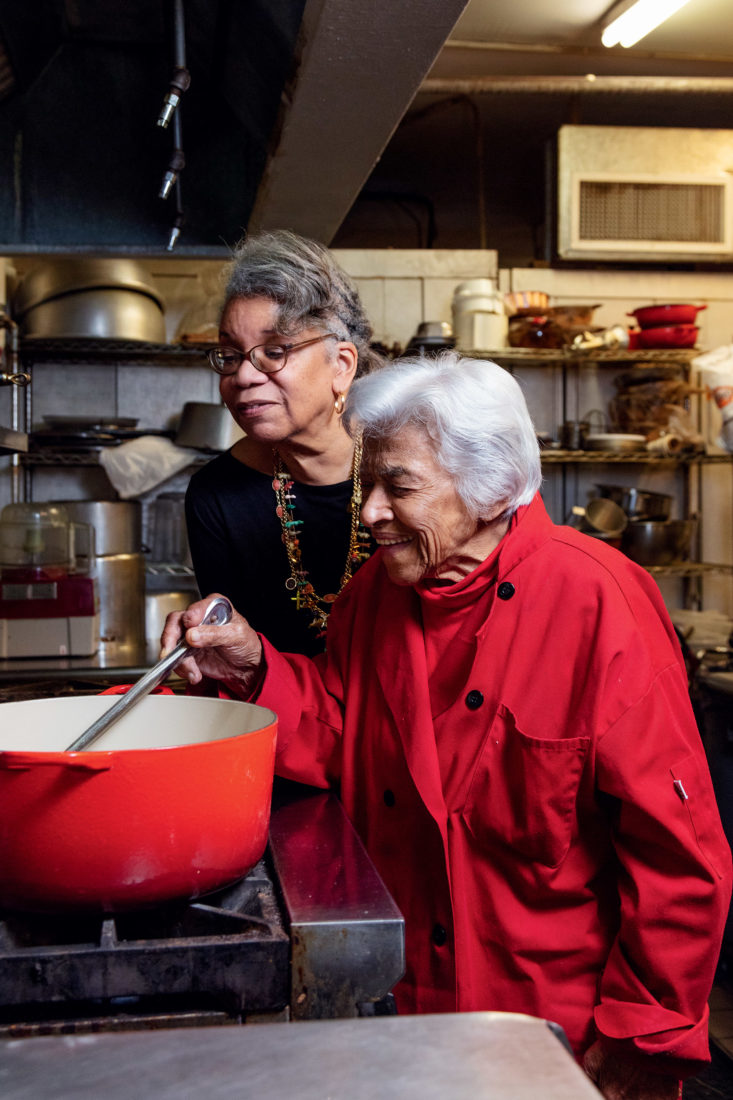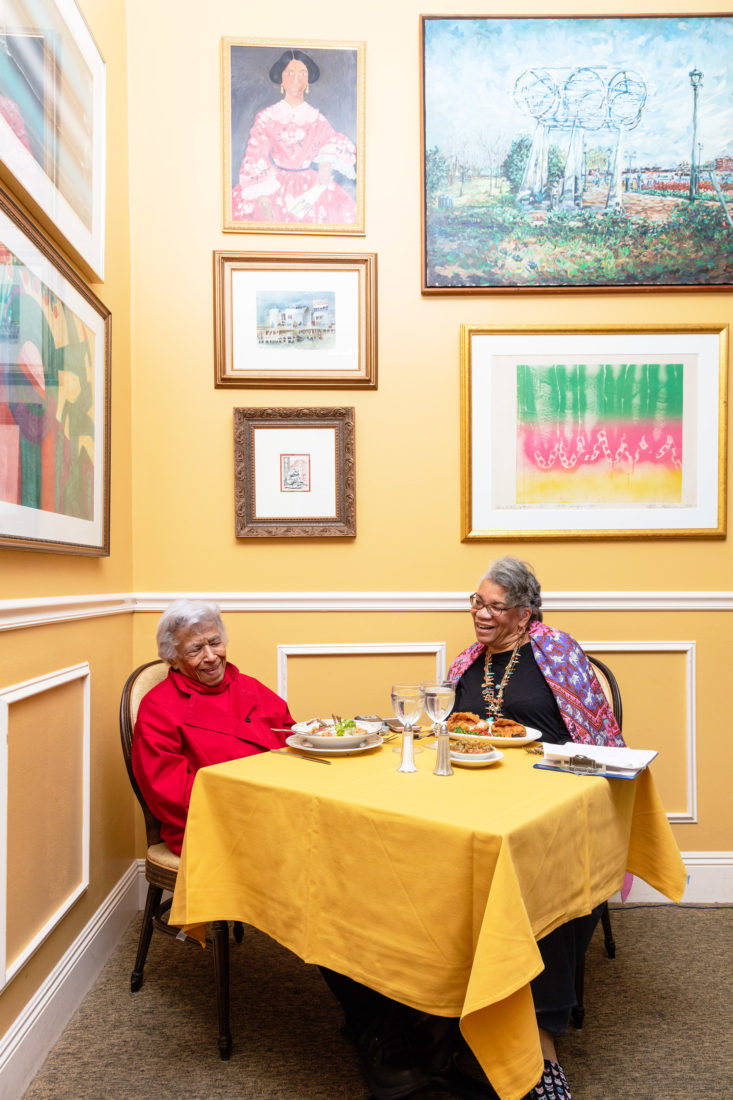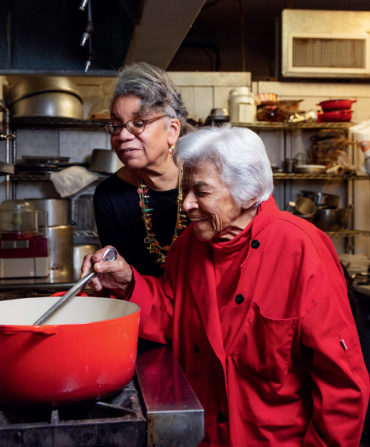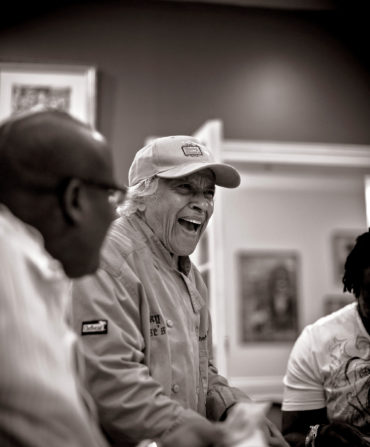The lying in state is over. The funeral mass has taken place. The sorrowful slow dirge has been played, the white doves released, and the umbrellas and antics of the second line captured on film. Life goes on and Dooky Chase’s continues to thrive on Orleans Avenue serving Shrimp Clemenceau, red beans and rice, and stuffed shrimp to locals and tourists alike. Now comes the time to review and recall the restaurant’s owner and chef Leah Chase’s vast legacy: her food and ability to attract presidents and paupers alike to her white-clothed tables for more than six decades; her work as a civil rights activist, feeding the Freedom Riders and providing a safe space for blacks and whites to come together over fried chicken and gumbo to strategize in the restaurant’s upstairs room at a time when simply being at the same table was illegal; even Disney’s first African American princess was based on her life. But there was an element of Leah Chase and her inheritance that may surprise those who only knew her as the Queen of Creole Cuisine—she loved artists and art. “You know, it’s a big part of my life because it did something for me,” she reminded me in 2018 during our last interview, for Garden & Gun’s forthcoming Southern Women book.

Photo: Cedric Angeles
Leah Chase with Harris in the kitchen of her New Orleans restaurant in 2018.
While the kitchen may have been her heart, art was her soul: It was a world where she found her true self, and where she delighted in being. The art in Dooky Chase’s restaurant reflects that love and connection. “Two Generations, by Elizabeth Catlett, I love that piece—that was one of the first pieces I got,” Chase recalled in a 2008 interview with the Times-Picayune, referencing the late graphic artist and sculptor who also introduced Chase to the work of other African American artists. “Elizabeth sold me that piece for $300. Now you can’t touch it for $3,000!” The piece, an arresting print depicting two profiles—signed with a dedication from Catlett to “Leah and Dooky Chase with sincere regards”—still hangs in the main dining room of the restaurant, along with several others by Catlett.
“I started collecting in the early 1970s, and I didn’t know anything,” Chase said to the Times-Picayune. “I had posters. I had a wonderful poster by Jacob Lawrence.” His, in fact, was the first show she ever went to see. During our interview, she told me that the renowned African American painter’s Migration and Builders series spoke to her because of their shared connection with President Franklin D. Roosevelt’s Works Progress Administration—during the Great Depression, the WPA employed Lawrence, as well as Chase’s father. “I learned to look at his work, and from there on, I just learned to look at things. Sometimes you don’t understand it. Sometimes you look at it, you say, ‘Oh my goodness, this is so ugly.’ Look again. Look again and you’ll see something.”
In Chase’s early years of collecting, there were few places for African American artists to exhibit their art; therefore, she displayed their work on the walls of her restaurant instead. Today, that collection includes a print portrait of Catlett by John Scott, the McArthur “genius” grant–winning New Orleans artist who was another Dooky Chase regular; and pieces by superstars such as John Biggers, Romare Bearden, and Lois Mailou Jones hang alongside works by notable New Orleans artists like Willie Birch and Ron Bechet—both of whom, representing the art world, spoke at Chase’s recent memorial service. Other local artists like Ulrick Jean Pierre and Andrew Hopkins, as well as pieces that were gifts from friends, relatives, and patrons, also appear. Her criteria for inclusion was simply that the works had to appeal to her.

Chris Grainger
Chase’s love of art and artists truly crystallized when a friend proposed that Chase be considered to replace her on the New Orleans Museum of Art’s board in 1977. For someone who had not entered a museum until she was in her fifties because of segregation, it was a leap of faith. But in the art world and the world of museums, Chase found her bliss: She became a NOMA board member, volunteered, and eventually was named an honorary board member, a capacity in which she served until her death. She was even the subject of a 2012 show at “her” museum, which featured paintings of Chase in the restaurant kitchen by the New Orleans artist Gustave Blache III—one of which now resides in Washington, D.C.’s National Portrait Gallery.
Over the decades, Chase’s African American clientele started to pay attention to the art in her restaurant, and began acquiring pieces for their own homes. She advised them to look closely at the work. “You can almost view the art as a prayer, and I always envied artists for that,” Chase told the Times-Picayune. “The artist begins to talk to you; you begin to feel it…I don’t care who did it. If it talks to you, that’s what you should hang up.”
As her own collection grew, it took over the walls of the restaurant, and she even added three-dimensional pieces by New Orleans artists such as Clifton Webb and MaPo Kinnord-Payton. When Hurricane Katrina struck the city in 2005, the storm devastated the restaurant, but thanks to the care of her grandson and others, the art survived and was rehung. One of the delights for many when returning to the city after the storm was seeing that continuity—the beloved art hanging in the newly refurbished restaurant.
Her artistic legacy extended beyond Dooky Chase’s walls, though. As a board member at NOMA, Chase was instrumental in spurring the museum to expand its collections in order to appeal to a more inclusive demographic, one that better represented the city she so loved. She even testified before Congress in support of the National Endowment for the Arts, and when Chase turned ninety, NOMA honored her by establishing an acquisition fund in her name to purchase the work of African American artists.
Leah Chase’s collection of African American art and her unswerving support of artists gave New Orleans its own version of Saint Paul de Vence’s famed La Colombe d’Or: a restaurant space that became a gallery space—one where an individual’s love of art created a landmark collection. When she died, the post-entombment repast was held in the central hall of the New Orleans Museum of Art. There was no more fitting venue in New Orleans for Leah Chase, whose soul sang with art.








